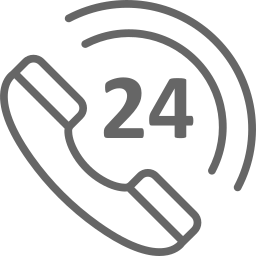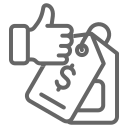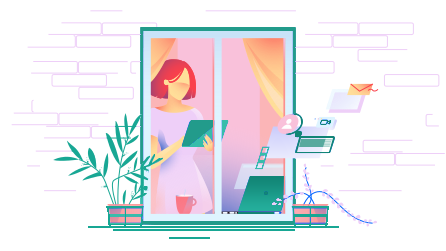Table of Contents
Introduction.
Theories of Internal and External Factors Influencing Consumer Behavior
Need Recognition.
MAO theory.
Influence of MAO on consumer behavior
Apply MAO using product
Information Search.
Internal source: Attitude.
External source: Reference groups.
Influence of reference group and attitude on consumer behavior
Apply the theory of ATO model using product
Marketing Recommendations.
Conclusion.
References.
Consumer behavior can be defined as the procedure in which take decisions on how they will employ their accessible resources to gratify their needs. The consumer decision-making process can be defined as the complex process that involves consumers recognizing his needs, collect information, assess alternatives, and make a buying decision (Mathras et al 2016). Jump electric bike is the shared service offered by the company named as ‘Uber’. These bikes are pedal-assist meaning that it runs faster as a user more powerfully pedals it. Anyone can rent electric bikes and scooters to use for commuting or fun. These bikes are featured with fancy novel displays, lithium batteries, cable locks, all of which make the e-bikes easier to use, and more resilient. The Uber Company belongs to the transportation taxi industry (Bakó et al 2020).
The segmentation of the e-bikes of Uber is tabulated as follows:
|
Type |
Criteria |
Target customer segment |
|
Geographic |
Region |
Global market |
|
Demographic |
Age |
16 plus |
|
Gender |
Males and females |
|
|
Occupation |
Professionals, students, and employees |
|
|
Behavioral |
Personality |
Determined and ambitious |
|
User status |
Potential users, regular users |
|
|
Psychographic |
Lifestyle |
Succeeder, Aspirer, Explorer |
|
Social class |
Lower, middle, and upper |
Table 1: Segmentation of E-Bikes
The target market for the Uber e-bikes services is the consumers who are more using smartphones and having full access to the internet. These people can be aged between 18 and 30. More specifically, the target consumers are the students and the business people who need to travel daily for their studies and the work.
Need Recognition is the initial stage of the consumer decision-making process that allows consumers to recognize their needs and then identify the product or service that could fulfill those needs. In this case, the need for the consumer for the product Jump electric bike of Uber (Arthur, Owusu, and Boateng 2020). Moreover, the key theory that applies to the consumers in this stage is the MAO model. This means motivation, ability, and opportunity. This model is described below:
Motivation: It refers to the interior stage of the enthused vigor that is focused on accomplishing a goal. The consumer's motivation is originated from the goals, needs, values, and more. Maslow's theory of need recognition is suitable to explain this. As per this model, there are five phases of the needs ranked in a specific order from lower-level needs to a high level from top to bottom. These needs are psychological needs, safety needs, social needs, esteem needs, and self-actualization needs (Gomez 2019).
Ability: If a consumer cannot process the information, their motivation could not convert into action. Therefore, consumer ability is the one factor that could make them capable of making decisions to involve in behaviors. It can be defined as the extent to which consumers have the resources required for a result to happen. The factors that can affect the ability of the consumers are financial resources (money), emotional resources (empathy and sympathy), physical resources, cognitive resources, socio-cultural resources, and more.
Opportunity: The factor that can impact the consumer’s motivation is the consumer’s opportunity. The factors that affect the same are the complexity of information, time, and distraction. Time may pressurize the consumer to buy or not to buy the products or services. Similarly, there can be the availability of complex information that can ruin the opportunity, and distraction can be there that can prevent consumers to make decisions.
Influence of MAO on consumer behavior
The MAO model can influence the consumer decisions making process as motivation is the factor that could drive them to spend more effort and time on the decision regarding the purchase of products or services. Moreover, the motivation theory is accompanied by opportunity and the ability that influences consumer behavior. These are the internal factors responsible for consumer behavior. The motivated consumers are prepared, eager, and enthusiastic to involve in an objective pertinent activity (Gilal et al 2019).
Apply MAO using product
Suggestions for Uber to influence the consumer at this stage
With the increasing advancements in technology, marketers can market their products by knowing the information regarding consumer behavior. Uber can use numerous ways to influence its consumers at the need recognition stage.
Product: By understanding the tastes and preferences of the consumers for the computing, Uber can know the motive of the consumer behind the need and it can use this information to influence the consumers for its new product jump electronic bikes that can fulfill the needs of the consumer in the best possible manner.
Price: Understanding consumer behavior enables Uber to know about the customer's ability towards prices, and thus Uber must reach the worthy consumers who want the best services whatever the price may be. Uber can influence them by giving them special discounts on the first few rides to gain their trust and loyalty.
Promotion: By knowing the consumer behavior about how they travel short distances, Uber must promote its novel services of jump electronic bikes for commuting purposes through the social media platforms like Facebook, Twitter, and more. There must be some educational campaigns for consumers to make them knowledgeable about the product.
Place: To give convenience to consumers, it can influence the consumers at the need recognition stage by providing triggers to be remembered by consumers when feeling the stimuli.
Evidence of consumer buying behavior for E-bikes
It has been found that consumers have already experienced such E-bikes services for computing purposes. Some people are satisfied with the services. However, some found it ineffective due to its low battery that can only travel such short distances. Some are not satisfied with the prices of the product that has affected customer satisfaction to a great level (Godey et al 2016).
Gaps between expectations of consumer and offering of the company
Overall, the expectations of the consumers with electronic bike services can be fulfilled by the Uber jump electronic bikes due to its novel enticing features. There are no gaps in the expectations of consumers and the services of Uber Company for electronic bikes. The features of its jump electronic bike are that its battery is custom-built, easy to use, and less in need of continuous cares. These are resilient and are price-effective than its previous models.
Information search is the second stage of the consumer buying decision-making process that is known as the pre-purchase stage. This stage requires consumers to search for the relevant information before the purpose of the product or services. In this, consumer gathers information from a variety of internal as well as external sources. Need to be identified in the first step can be fulfilled in numerous brands of a product. This issue can be solved for consumers after substantial research over the product brands and their features. Below are the description of one external and one internal source of information regarding the product (Maity, Dass, and Kumar 2018).
Internal source: Attitude
Consumer Attitude is the thinking of an individual for a product or service that is developed through his previous experiences, beliefs, and knowledge.This is the constant process that keeps on changing and acquires novel knowledge. This is known as personal knowledge about the product. It can be said that a person may have a negative or positive attitude toward a product (Rana and Paul 2017). The relevant model or theory for the attitude in consumer behavior is the ATO model. This model is an attitude towards the object model that concentrates on the object linked phases of the purchase. Moreover, it evaluates the likes and hates of the consumers using the Fishbein model. This model says that consumer selects those product or services based on the comparative analysis of numerous brands. They usually go in for products based on attributes such as performance of product or service, the durability of product, reliability, and novel features that can meet the desires of consumers. They keep on rating the products based on the above requirements and attributes they desire and according to their rating, they make decisions for final purchase (Yarimoglu and Binboga 2019).
External source: Reference groups
Reference groups are the external influence of consumer behavior at the information search stage. The primary reference groups are friends and family as they interact more with the individual. References group refers to those people whose aid consumer takes while making buying decisions. They are the same as decision leaders in that they can have a profound motivation in consumer buying. They usually influence the product or service purchase when the consumption is noticeable. There are numerous types of reference group’s namely formal like work people; aspirational like belongs to a specific group; dissociative like person driven away from a specific group, and more (Fernandesand Panda 2019).
Influence of reference group and attitude on consumer behavior
There is a large impact on the above theories regarding attitude and reference groups. There are similar opinions of the people in the reference groups that have a huge impact on the behavior of the consumers. They create aspirations in all the members of the group and inclined to provide ideas related to products that can be purchased. Moreover, the theory of attitude "ATO model" can influence consumer behavior as it enables the consumer to decide on the high price or high involvement consumer purchase. This allows consumers to rate numerous attributes like design, low price, quality, durability, and others. With this, the consumer identifies and describes his attitude towards each brand and then decides to purchase the product as per the rating.
Apply the theory of ATO model using the product
Suggestions for Uber to influence the consumer at this stage
Product: At the information search stage of the consumer decision making, Uber can influence the attitudes of the consumer for its Jump electronic bikes. Uber must do advertisements for this service on an enormous amount to appeal to the consumers towards it.
Price: In the information search stage, consumers search for reasonable price brands. By understanding the price sensitivity of consumers, they must set their price for the electronic bike services as affordable as possible as usually, the daily commuting people need this service.
Promotion: The most preferred brand is the preference of consumers. Keeping this in mind, Uber must make its jump e-bikes services as preferable as possible by promoting in the manner of giving a discount of price and offering gift vouchers for the brand attraction.
Place: To give convenience to consumers, it can influence the consumers at the information search stage by offering prompt services on the place decided by the consumer itself (Min, So and Jeong 2019).
From the above report on the consumer decision making the process of the Uber Jump e-bikes, it can be concluded that the MAO model is used for the need recognition stage of the decision-making process, the ATO model is used for the attitude factors that influence the consumer behavior. Moreover, the influence of the MAO model on consumer behavior is that it motivates the consumers for purchasing the e-bikes services of Uber. It can also be inferred that the recommendations for the company are that it must include brand equity as a strategy to aware consumers of its services. Furthermore, it must use mobile markings for the things to happen in an improved manner.
Arthur, A., Owusu, I., and Boateng, E. D. 2020. Determinants of Consumer Impulsive Purchasing Behaviour in Medium-Large Shopping Malls in Ghana. Open Journal of Business and Management, 8(2), pp.379-395.
Bakó, B., Berezvai, Z., Austin, P. and Vigh, E. Z. 2020. Does Uber affect bicycle-sharing usage? Evidence from a natural experiment in Budapest. Transportation Research Part A: Policy and Practice, 133, pp.290-302.
Fernandes, S., and Panda, R. 2019. Influence of social reference groups on consumer buying behavior: A review. Journal of Management Research, 19(2), pp.131-142.
Gilal, F.G., Zhang, J., Paul, J. and Gilal, N.G. 2019. The role of self-determination theory in marketing science: An integrative review and agenda for research. European Management Journal, 37(1), pp.29-44.
Godey, B., Manthiou, A., Pederzoli, D., Rokka, J., Aiello, G., Donvito, R., and Singh, R. 2016. Social media marketing efforts of luxury brands: Influence on brand equity and consumer behavior. Journal of Business Research, 69(12), pp.5833-5841.
Gomez, J. 2019. Consumer Behavior Using an Agent-Based Model: Analyzing 4 Theories. Available at SSRN 3495241.
Maity, M., Dass, M., and Kumar, P. 2018. The impact of media richness on consumer information search and choice. Journal of Business Research, 87, pp.36-45.
Mathras, D., Cohen, A. B., Mandel, N., and Mick, D. G. 2016. The effects of religion on consumer behavior: A conceptual framework and research agenda. Journal of Consumer Psychology, 26(2), pp.298-311.
Min, S., So, K.K.F. and Jeong, M. 2019. Consumer adoption of the Uber mobile application: Insights from the diffusion of innovation theory and technology acceptance model. Journal of Travel & Tourism Marketing, 36(7), pp.770-783.
Rana, J., and Paul, J. 2017. Consumer behavior and purchase intention for organic food: A review and research agenda. Journal of Retailing and Consumer Services, 38, pp.157-165.
Yarimoglu, E., and Binboga, G. 2019. Understanding sustainable consumption in an emerging country: The antecedents and consequences of the ecologically conscious consumer behavior model. Business Strategy and the Environment, 28(4), pp.642-651.
Remember, at the center of any academic work, lies clarity and evidence. Should you need further assistance, do look up to our Consumer Behavior Assignment Help
Explore More
Top 5 Strategies for Changing Consumer Behavior Challenges
Writing An Assignment On Consumer Buying Behaviour Effortlessly

Get 24x7 instant assistance whenever you need.

Get affordable prices for your every assignment.

Assure you to deliver the assignment before the deadline

Get Plagiarism and AI content free Assignment

Get direct communication with experts immediately.
Secure Your Assignments
Just $10
Pay the rest on delivery*

It's Time To Find The Right Expert to Prepare Your Assignment!
Do not let assignment submission deadlines stress you out. Explore our professional assignment writing services with competitive rates today!
Secure Your Assignment!